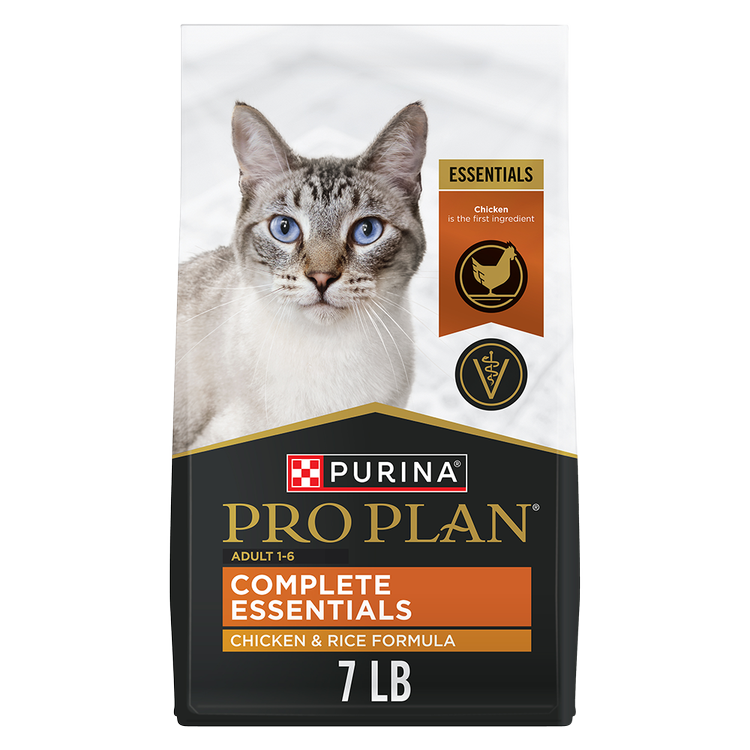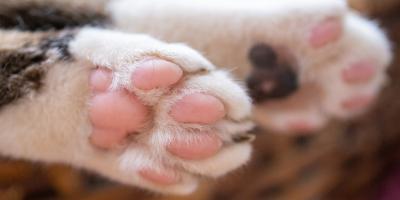Why Does Your Cat Have Matted Fur? Here’s How Often You Should Brush Your Cat


Even though cats do a great job of grooming themselves, they can still get mats in their fur, especially if they stop grooming due to age, weight gain, or illness. In this article, we review how to prevent mats from forming and how to get mats out of your cat’s fur.
Why Does Your Cat Have Matted Fur?
Mats are made up of clumped dead hair, dead skin cells, outdoor residues, and any kind of dirt your cat rubbed up against. When the dead hair is not removed with the cat’s grooming, or with brushing, mats can form.
There are numerous reasons why your cat may develop mats:
- Some cat breeds, especially long-hair breeds, are prone to getting mats
- Your cat has gotten older and has difficulty grooming herself
- Your cat has gained too much weight and can’t reach certain areas on her body for grooming
- Humid weather or change of seasons
In shedding seasons, the fall and the spring, the dead hair on the undercoat can accumulate and cause mats. These seasonal changes mostly affect outdoor cats. Indoor cats still experience shedding, although their shedding patterns may be less influenced by seasonal temperature changes. Excess body oil can also cause mats, especially with non-neutered males. If you notice your cat’s coat is oily, you should check with your vet.
If your cat suddenly develops mats when she didn’t have them before, she should be seen by a vet. It most likely means your cat has stopped grooming, and that can be a sign of potential serious health conditions.
Cats with matted fur may be in pain, as mats can pull the skin and cause bruising. They restrict airflow, which can lead to infections when the cat’s skin becomes thin and fragile.
What Cat Breeds Are More Likely to Develop Mats?
Long-haired cat breeds are prone to developing matted fur. The mats will show up where there is friction on the cat’s body, primarily under the arms and on the back of the hind legs.
Long-hair breeds and mixed breeds with thicker undercoats are more likely to develop mats if they are not brushed regularly:
How to Brush a Cat to Remove Mats
Can you brush a cat to remove mats? Yes, if the tangles are not too large. To remove your cat’s mats by brushing, remember to start slow and gently so you don’t pull the skin. It’s best to remove small mats and tangles promptly to keep them from growing into large mats or pelts.
Do not use scissors on your cat’s mats. You may accidentally cut her skin, which will be extremely painful for your cat, plus it can lead to infections. If you can’t work the tangle out with your hands or a brush, use clippers.
Understand, it might take a while for your cat to get used to the feeling and sound of the clippers. Small, quiet, battery-operated clippers are best.
How to Brush a Matted Cat
- Separate the mat from the unmatted hair, being careful not to pull the skin.
- Gently rest your nondominant hand on your cat, holding the skin down.
- Slip the teeth of the comb or brush under the mat, and gently detangle the hair.
- Some cat owners like to sprinkle a bit of cornstarch on the tangle, but don’t overdo it.
- Pet hair conditioner or pet detangling spray may help. Just make sure it’s okay for cats, because they will groom the area when you’re finished, and you don’t want them ingesting a harmful substance.
- If your cat gets upset, stop brushing, reassure her, and give her a treat.
- Wait until she relaxes before trying again.
You may only be able to untangle one or two mats before she gets agitated. Don’t bathe your cat before trying to remove the mats, as wet fur will just make the mats worse.
Do cats like being brushed? Some do, some don’t. But even the cats that enjoy it may reach a point where they’ve had enough. If your cat appears to be getting angry, stop brushing and let her calm down.
Tools and Techniques for Brushing a Cat
The tools needed for brushing a cat are quite simple:
- Slicker brush, which has fine, short wire bristles close together on a flat brush head. Use this for regular brushing when there are no mats.
- Flea comb to check and remove fleas and their eggs, fine debris, and dirt. If your cat likes being brushed with this kind of comb, you can use it for regular brushing, especially on short-haired cats. If your cat has fleas, ask your vet for flea medication. Brushing alone will not solve a flea infestation.
- If your cat tries to bite you or the brush, you might try silicone brushes or grooming gloves.
- For detangling mats: There are specific grooming combs that have different kinds of teeth – a wide-tooth comb for detangling and longer-tooth comb for brushing the undercoat to remove dead hair.
- Cat-friendly detangling spritzer spray can help.
Always brush in the direction of the fur growth. The only exception might be on the back near the base of the tail to check for fleas. Gently comb the opposite direction to lift the fur and look for signs of fleas – actual bugs or tiny black dots, which are flea waste.
Does brushing a cat help with shedding? Absolutely, brushing removes your cat’s dead hair before it ends up on your furniture and clothes.
For brushing a long-haired cat, use longer toothed combs, slicker brushes, or deshedding and detangling tools. You want to make sure you remove the dead hair from the floofy undercoat. For brushing a short-hair cat, a regular slicker brush or flea comb should be enough to remove the dead hair.
How Often Should You Brush Your Cat?
How often you should brush your cat depends on your cat, the season, and how well she tolerates it. Brushing your cat regularly can help you reduce the number of hairballs, limit shedding around the house, spot fleas or skin irritations, and bond with your cat. For short-haired cats, a good brushing every couple of weeks is okay.
Long-haired cats may need to be brushed once a day to stop mats from forming, especially during the shedding seasons. You may be able to go longer between brushings, but don’t extend the intervals for more than one week or mats may start to form.
Can you overbrush your cat? It’s possible, so don’t overdo the brushing sessions, or it may result in skin irritation or bald patches. These are most likely to occur from your cat overgrooming herself.
How do you brush a cat that hates it? If your cat is extraordinarily hand shy, isn’t used to getting brushed, or just doesn’t like it, you’ll need to introduce the brush and comb slowly. Wait until she is relaxed and pet her a little bit before bringing out the brush. Move slowly and start brushing lightly where you know your cat likes to be petted – most likely between the ears, under the chin, or on the back near the front.
When your cat gets comfortable being brushed in those spots, then gradually expand to more sensitive areas like the stomach, the rear, and the base of the tail. Don’t force it. If she starts to scratch or bite, stop brushing and start again later.
Do cats like their bellies brushed? Most cats don’t like their stomachs touched, much less brushed, so take it slow. Be gentle brushing your cat’s belly, and she may grow to enjoy it.
When to Bring Your Cat to the Groomer to Take Care of Matted Fur
If your cat has a significant number of mats, get help from a professional groomer. They may have to give her a lion cut, where the fur is closely shaved except for the mane, lower legs, and tail.
That kind of cut should not be done unless it’s absolutely necessary because of severe matting. While it may be required if your cat has a lot of mats, it’s not ideal for your cat’s health. Your cat may not be able to regulate her temperature without her coat. If your cat must be shaved, make sure she does not get overexposed to the sun because, without her fur, she may be prone to sun irritation and skin cancer.
After that, stay on top of the mats so your cat doesn’t need an extreme cut again.
The more you practice, the more comfortable and experienced you will be at brushing your cat and removing mats.
For more expert tips on grooming your cat, explore our other cat routine care articles.
Related articles

Earn myPurina Rewards with Every Purchase
Use your points for treats, toys, and gift cards with myPurina app.






